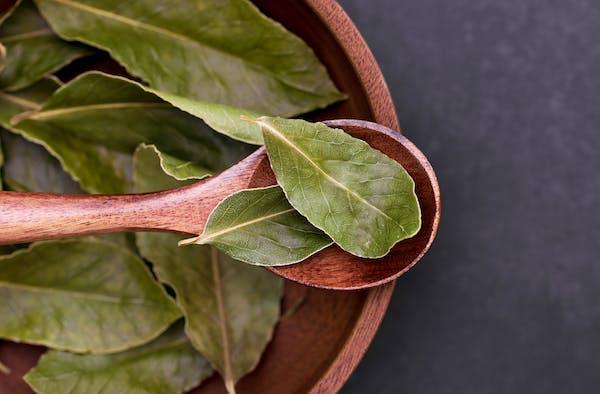Native to the Mediterranean, bay leaves haven’t always been isolated to the kitchen for their culinary uses. This leafy herb, which comes from the laurel tree, was used in ancient Roman and Greek societies to crown the heads of victors after battle as a symbol of their success.
Today, bay leaves are more commonly found swimming in pots of rich sauces, rather than adorning the heads of victors. Unlike its herbal cousins, bay leaves are rarely consumed directly, as they're typically added to a sauce or stock during the stewing process and removed before consumption.
What Are Bay Leaves?
The bay leaf is a powerfully aromatic leaf used primarily for culinary purposes. Although there are multiple varieties of bay leaves cultivated around the world today, the original bay leaf came from the bay laurel tree (Laurus nobilis) native to the Asian region of the Mediterranean. This form of bay leaf, which is also known as sweet bay and Grecian laurel, is still the herb typically used for infusing soups and sauces with an aromatic flavor.

Bay leaves can be used in dried, crushed, and fresh form, but are most commonly sold as dried whole leaves in the spice aisle of any grocery store.
What’s the Difference Between Fresh Bay Leaves and Dried Bay Leaves?
The flavor and aroma of bay leaves varies between the fresh and dried forms. While fresh bay leaves have a notably bitter taste and pungent aroma, dried bay leaves take on more herbal notes reminiscent of thyme and oregano. As a rule of thumb, 1 dried bay leaf can be substituted with 2 fresh bay leaves for a similar flavor.
Due to this difference in flavor, bay leaves are one of the few herbs generally preferred in its dried, rather than fresh, form. The flavor released by the dried herb can also vary depending on the time it's spent steeping in hot liquid. A dried bay leaf simmered for a few minutes will give off hints of eucalyptus and menthol thanks to an organic chemical called eugenol. However, these harsher chemical notes will diminish the longer a bay leaf is stewed, giving way to more gentle herbaceous flavors and aromas.
Culinary Uses for Bay Leaves
Bay leaves are a common ingredient in the French “bouquet garni,” a traditional bundle of herbs that is tied together and added to stews, soups, sauces, and casseroles during the cooking process.

Bay leaves are also commonly used in marinades for meat and fish, added to boiling water to cook seafood like crab and shrimp, and used in pickling solutions. In addition to these various savory applications, bay leaves are also occasionally added to the cream mixture for rice pudding, infusing the dessert with a subtle herbal flavor.
How to Store Bay Leaves
Dried bay leaves should be stored in an airtight container in a cool, dry place. Dried bay leaves will maintain their flavor for 2 to 3 months. While you can still use the leaves past this date, the flavor will be significantly reduced. To keep dried bay leaves fresher for the long haul, store the leaves in an airtight container in the freezer.
Fresh bay leaves should be wrapped in a damp paper towel and stored in a ziplock bag in the refrigerator for 1 to 2 weeks. Optionally, fresh bay leaves can also be stored in the freezer to significantly extend the shelf life.
GRAB YOUR PRODUCT


